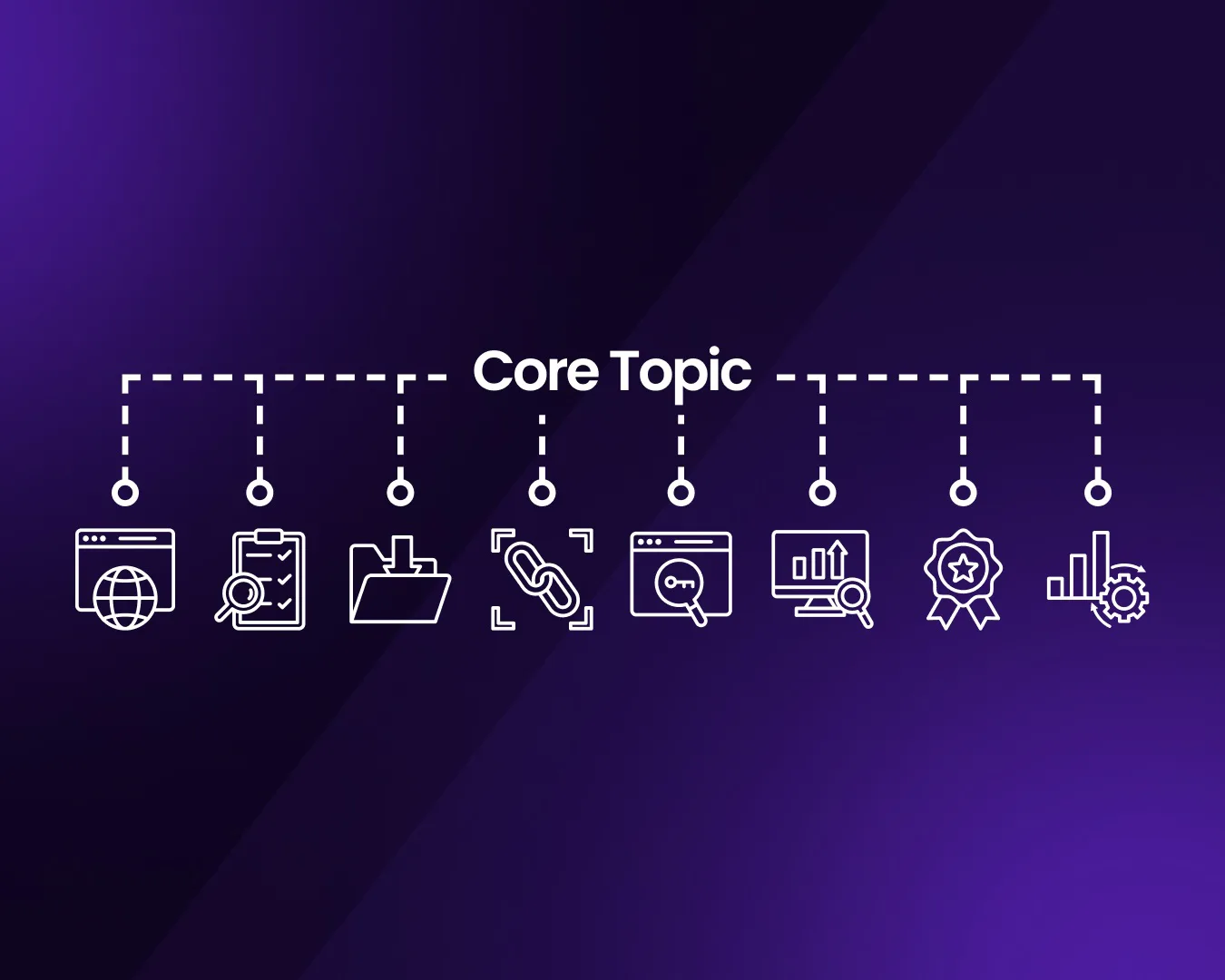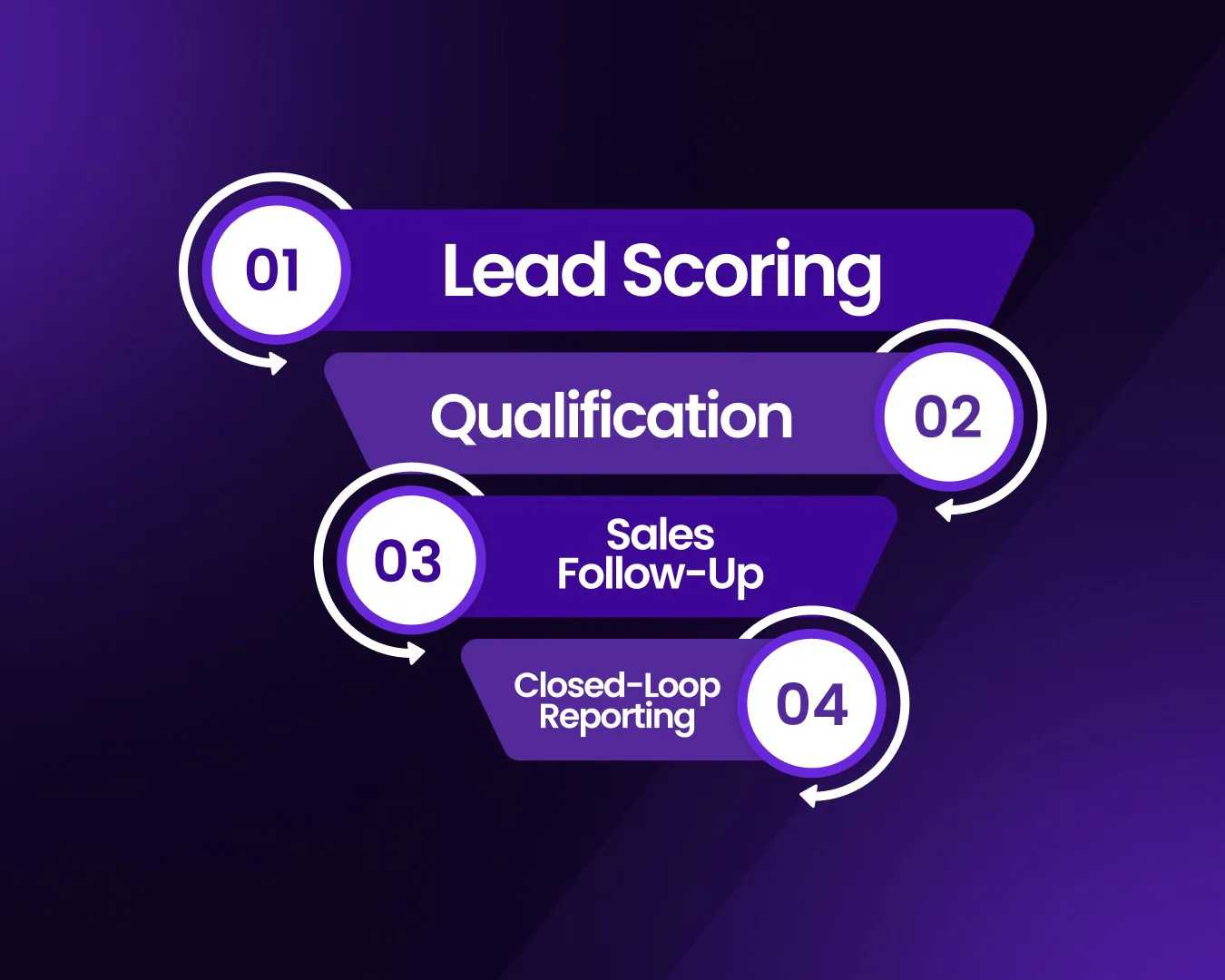You’re the underdog, armed with a razor-thin marketing budget, tasked with generating enterprise-level results with startup-level resources.
If this sounds familiar as a B2B marketer at a tech company, you’re not alone. B2B sales cycles are complex — on average, buyers consume 13 pieces of content before making a purchase decision. When your marketing team consists of you and maybe two others, delivering substantial results with minimal resources feels impossible. In this scenario, effective B2B marketing strategies can make all the difference.
B2B marketing presents distinct challenges. Sales cycles extend for months. Deals come with five or six-figure price tags. Instead of persuading one person to click “buy now,” you navigate buying committees where each member brings different priorities to the table.
By leveraging various online tactics and tools, digital marketing can help small teams enhance their presence and connect with prospective customers. I’ve worked with dozens of small marketing teams at tech companies facing these challenges. The successful ones focus on 5 core B2B marketing strategies:
- Understanding Your Target Audience and Ideal Customer Persona (ICP): Knowing exactly who buys from you and why.
- Content Marketing AND Thought Leadership: Building trust through valuable expertise.
- Multi-Touch Demand Generation: Meeting prospects where they are with the right message.
- Sales and Marketing Alignment: Creating seamless handoffs and shared goals.
- Measuring Success and Return on Investment (ROI): Tracking what matters to prove and improve performance.
In this article, I’ll break down each proven ingredient with practical B2B marketing strategies you can implement immediately — even with limited time, budget, and team members. By the end, you’ll have a system that delivers measurable results without requiring enterprise-level resources.
Understanding B2B Marketing and Setting Up Your Marketing Efforts
B2B marketing, or business-to-business marketing, involves promoting products or services to other businesses using tailored marketing strategies. Unlike business-to-consumer marketing, which targets individual consumers, B2B marketing strategies focus on understanding business buyers’ needs and challenges with the purpose of crafting approaches that resonate with them.
The B2B market’s buying process is complex. It involves multiple decision-makers. It requires a deep understanding of the target audience, their pain points, and buying behavior. Effective B2B marketing strategies integrate activities across channels like content marketing, social media marketing, email marketing, and search engine optimization (SEO) to drive revenue and build brand awareness.
For instance, a company selling marketing automation software must showcase how its product solves marketing teams’ problems. It must use educational content marketing and social media platforms to engage potential customers and optimize its website for search engines.
Establishing Your Value Proposition
A compelling value proposition is vital for effective B2B marketing strategies. It clearly communicates your product or service’s unique benefits and explains why your target audience should choose you over competitors. Understanding your audience’s needs and pain points is essential.
Conduct thorough market research and competitor analysis to pinpoint what differentiates your product. Ensure your value proposition is consistently communicated across all marketing channels, including your website, email marketing, and social media marketing, making it easy for potential customers to understand your unique value.

Understanding Your Target Audience and ICP
Defining Your ICP and Buyer Personas
Precision targeting is crucial for small B2B teams to maximize marketing dollars. Among essential B2B marketing strategies, defining your ICP is key. Analyze current customers to find those who renew easily and refer others, revealing your true ICP.
For example, a SaaS company initially targeting “mid-sized businesses” found through data analysis that their ideal customers were tech companies with 50-100 employees using HubSpot or Salesforce, reducing acquisition costs by 40%.
Collaborate with your sales team to build accurate buyer personas — they understand the customers’ objections and motivations. Interview top customers about their buying journey and examine support tickets for common pain points.
Remember, B2B purchases involve multiple decision-makers. Map the buying committee to identify influencers, approvers, and implementers. Create personas for each role and understand their buying journey. This will ultimately help strengthen your B2B marketing strategies.
Focusing on the Decision-Making Process in B2B
B2B buying processes are complex, with detours and multiple guides. A prospect might love your demo, then stall while building internal consensus or securing budget approval.
Map this journey for your customers. Where do they get stuck? What objections arise? Talk to recent wins and losses to understand the real process. These insights will inform more effective B2B marketing strategies.
Create content tailored to different stakeholders. Your CTO prospect wants technical specifications. The CFO needs ROI calculations. End users want to know how your solution simplifies their work.
The Power of Account-Based Marketing (ABM)
For small teams selling high-value solutions, ABM focuses resources for maximum impact. It’s among the most targeted B2B marketing strategies.
Treat key accounts as markets of one. Instead of generic campaigns, create personalized approaches for specific target accounts.
Start small. Identify 10-15 dream clients and learn everything about them. Tools like Demandbase and Terminus help scale account based marketing efforts, but start with LinkedIn, your CRM, and focused research and actions. For example, a small marketing team can create custom one-pagers for target accounts’ challenges that might increase meeting rates.

Content Marketing & Thought Leadership
The Importance of Educational Content
Successful B2B marketing strategies recognize that prospects focus on their problems, not your product. Educational content bridges this gap, attracting prospects by addressing their challenges and building trust before introducing your solution.
A security software client shifted from product-focused to compliance-focused content, resulting in a practical guide that drove 40% of qualified leads. Video marketing enhances engagement by creating educational content that addresses industry concerns.
To create effective educational content, interview customers about their challenges, tap into subject matter experts for insights, and document solutions provided during support calls. Quality trumps quantity; one comprehensive guide can outperform many superficial posts.

The Role of SEO and Pillar Content
Business-to-business companies often struggle with competitors dominating organic search. Innovative B2B marketing strategies, focusing on smarter content, can change this dynamic.
Create comprehensive pillar pages on topics your audience cares about. For example, if you sell marketing software, your pillar could be “Marketing Automation Strategy Guide.” Build related posts linking back to this pillar, such as “Email Sequence Best Practices.”
This approach signals authority to search engines and enhances the reader experience. Optimizing content for search engines can increase your chances of appearing in top search results, boosting visibility and credibility.
Repurposing Content Across Multiple Channels
Maximize the value of your content by repurposing it across social media channels. Transform a whitepaper into LinkedIn posts, webinars, blog posts, and email content.
Video marketing can also repurpose content into engaging videos for different platforms. Adapt content to each platform’s strengths — LinkedIn audiences want concise insights, webinar attendees expect interaction, and email readers need clear takeaways.

Multi-Touch Demand Generation
Combining Organic and Paid Strategies
Small teams must balance organic and paid marketing strategies for effective B2B marketing. Organic marketing builds credibility, while paid marketing boosts visibility. For example, one client with a limited budget strategically used paid LinkedIn promotions to amplify their top organic content. This ensured message consistency while leveraging LinkedIn and targeted search ads to extend their reach and drive better results.
LinkedIn remains the top platform for B2B marketers, with 17% planning to invest the most in it — outpacing TikTok and Instagram, which rank at 13%. This highlights the importance of prioritizing LinkedIn for organic reach, paid promotions, and thought leadership in B2B marketing strategies.
Lead Nurturing Through Email Automation and Retargeting
B2B purchases require nurturing over time. Sophisticated B2B marketing strategies involve email automation to deliver relevant content at the right time. In fact, email remains one of the most profitable marketing channels, with email advertising revenue projected to reach $17.9 billion globally by 2027, according to Statista.
Segmentation remains a key factor — group prospects by industry, buying process role, and challenges.
Engagement Through Webinars, Virtual Events, and Partnerships
Real-time connections are vital in complex B2B sales, making webinars a powerful tool. Rather than simply pitching products, interactive marketing strategies foster trust by tackling industry challenges. One client, for example, turned their technical webinar series into a top lead generator by focusing on problem-solving.
Strategic partnerships can extend reach without added costs to amplify this impact. Collaborating with complementary companies on joint webinars or co-created guides introduces you to new prospects and provides fresh, valuable content.

Sales & Marketing Alignment
The Importance of Lead Scoring and Qualification
“These leads are garbage,” says Sales. “Sales never follows up,” counters Marketing.
This conflict wastes time and loses deals. Lead scoring resolves this by establishing clear criteria for lead quality. Alignment-focused B2B marketing strategies like this improve departmental relationships.
Collaborate with your sales team to determine behaviors that indicate buying intent, such as website visits and email engagement, which signal a prospect’s readiness to buy.
One of our clients implemented a simple scoring system, assigning points for specific actions. Only leads reaching a 50-point threshold went to sales, boosting follow-up rates by 64%.
Integrating CRM and Marketing Automation Tools
Ensure your marketing technology platform and CRM are seamlessly integrated. This connectivity is vital for modern B2B marketing strategies, allowing synchronized efforts and shared insights. Tools like HubSpot and Salesforce offer the necessary infrastructure, but human collaboration is equally crucial. Establish consistent processes for lead handoffs, opportunity updates, and closed-loop reporting.
Automation plays a key role in reducing manual tasks. Set alerts for sales when leads show high intent and automate follow-up reminders to prevent leads from slipping through the cracks.
Establishing Clear SLAs (Service Level Agreements)
SLAs turn vague expectations into clear commitments between sales and marketing, enhancing accountability in B2B marketing strategies.
For instance, Marketing promises to deliver 25 qualified leads monthly, while Sales commits to follow up within 24 hours. Both teams agree on what defines a “qualified” lead and the expected funnel progression speed.
Involve both teams in defining key metrics and setting targets based on historical data. This collaborative approach ensures accountability and alignment toward shared goals.
Measuring Success & ROI
Key Metrics to Track
With limited resources, focus on essential metrics for your B2B marketing strategies:
- Customer Acquisition Cost (CAC): Cost to acquire a new customer.
- Marketing Qualified Leads (MQLs): Number of quality leads.
- Conversion Rates: Percentage of leads becoming customers.
- Customer Lifetime Value (CLV): Revenue generated over time.
Review these metrics monthly to inform resource allocation. Measurement-driven B2B marketing strategies improve through this feedback loop.
The Role of Multi-Touch Attribution
Customers rarely convert after a single touchpoint, making multi-touch attribution essential for identifying which social media channels drive conversions and refining B2B marketing strategies.
Fortunately, effective attribution doesn’t require enterprise-level martech. Businesses can gain valuable insights into the channels that deliver the most impact by tracking initial discovery and content engagement before conversion.
Setting Up Dashboards and Reporting
Dashboards provide quick performance insights, making them invaluable for small teams looking to refine their B2B marketing strategies. Visual analytics simplify data interpretation, ensuring teams stay agile and informed.
Custom dashboards tailored to stakeholders enhance decision-making. CEOs need high-level ROI metrics, while content marketing teams rely on engagement data. Clear visuals make complex information accessible, driving faster and more strategic actions.
Building a Strong B2B Marketing Strategy
Running Business-to-business marketing with a small team is like cooking a gourmet meal with limited resources. It’s challenging but achievable with the right approach.
Digital marketing empowers small teams to create robust B2B marketing strategies, enhance their presence, and connect with potential customers using various online tools.
We’ve explored five essential ingredients for small marketing teams to excel:
- Understanding Your Target Audience & ICP: Focus on prospects who will convert by defining your target precisely.
- Content Marketing & Thought Leadership: Build credibility and trust with educational content before promoting your product.
- Multi-Touch Demand Generation: Combine organic and paid strategies with lead nurturing to create multiple brand discovery paths.
- Sales & Marketing Alignment: Clear communication and integrated tools turn the sales-marketing divide into a partnership.
- Measuring Success & ROI: Track key metrics to refine your approach continuously.
Successful B2B marketing strategies don’t need large teams or budgets. They require focus, strategy, and smart resource allocation. Companies that excel understand their customers and align their organization to serve them effectively.
Implement these ingredients to build B2B marketing strategies that deliver measurable results and sustainable growth.
FAQs:
1. What is the biggest challenge small B2B marketing teams face?
Small teams often struggle with limited resources, making it difficult to execute large-scale campaigns. Balancing strategic planning with hands-on execution is a key challenge.
2. How can small teams maximize their marketing impact with a low budget?
Prioritize high-ROI strategies like organic content marketing, email automation, and targeted LinkedIn outreach. Leveraging free and low-cost tools can also help optimize spend.
3. What are some common mistakes small B2B teams make in their marketing strategies?
Many small teams spread themselves too thin across multiple channels without a clear strategy, resulting in inconsistent messaging and wasted effort. Lack of alignment with sales is another major pitfall.
4. How can a small marketing team create high-quality content without a dedicated writer?
Repurpose existing content (such as sales presentations or case studies), use AI-powered tools to assist in writing, and collaborate with subject matter experts within the company.
5. Which marketing channels are most effective for small B2B teams?
LinkedIn, SEO-driven blog content, email marketing, and strategic partnerships are among the most cost-effective channels for small B2B teams to generate leads and build authority.





